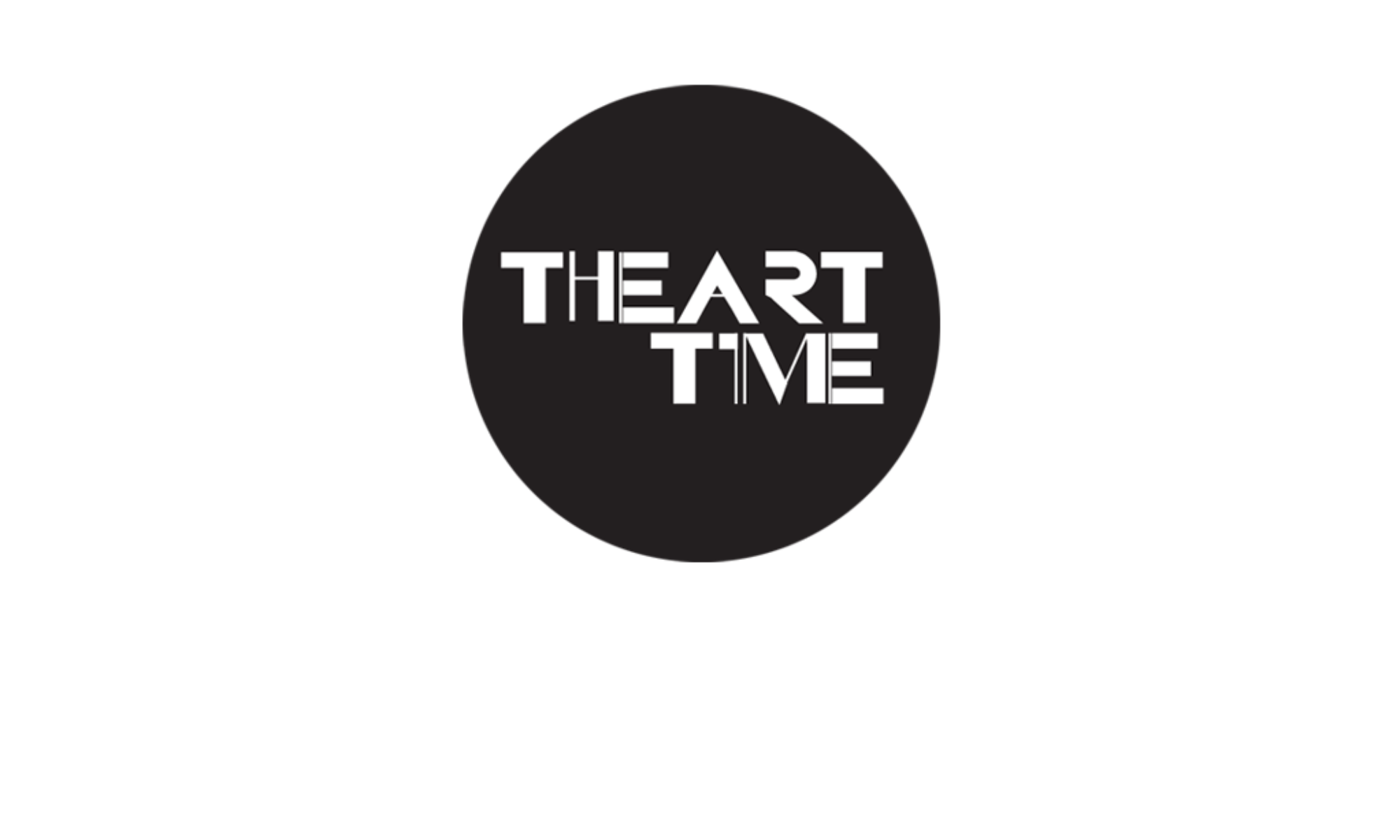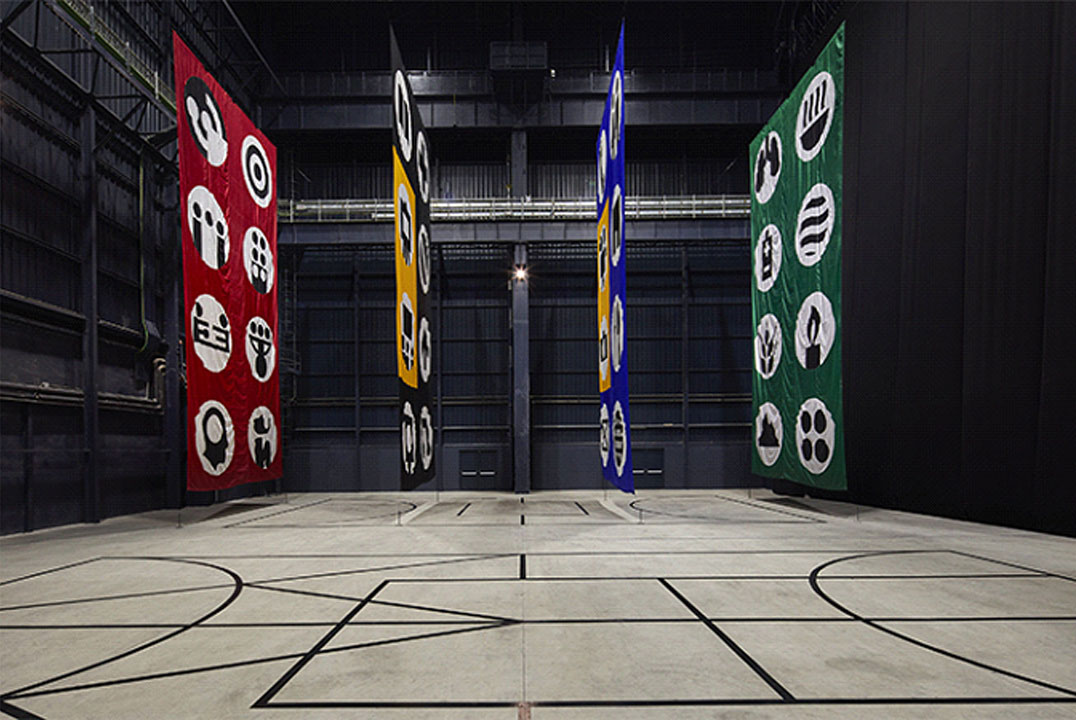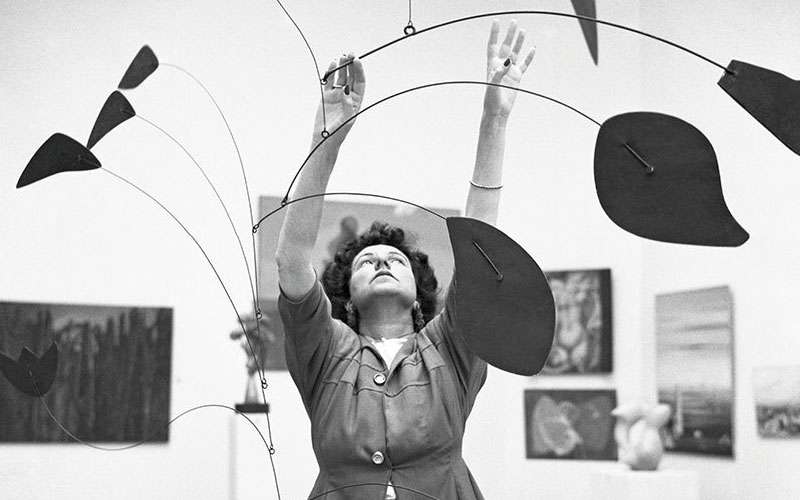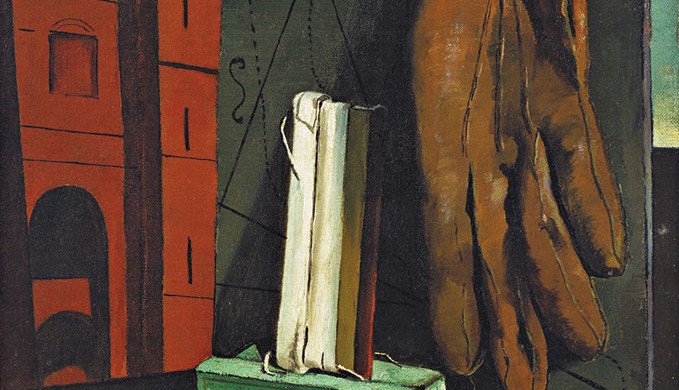⦁ Matt Mullican, the feeling of things, Hangar Bicocca, until September 16: in the concept album Tommy by The Who, said the protagonist “look at me, hear me, touch me, heal me”: emotions, feelings precisely. This is the Mullican retrospective at the Pirelli Hangar, 3500 square meters in which its unmistakable cosmologies are found in works from the seventies to today, including paintings, frottages, flags, glass sculptures, works on paper, video, light boxes, floor works and large installations. Space of great charme.
1948, la biennale di Peggy Guggenheim
“1948, the biennial of Peggy Guggenheim“, Venice, until November 25; The 70th anniversary of the exhibition of the Peggy Guggenheim collection takes place in the halls of the Greek Pavilion at the 24th Venice Biennale. It was the first time that Peggy’s collection was exhibited in Europe. His museum to celebrate the anniversary recreates the setting of the Pavilion set up on that occasion by the famous Venetian architect Carlo Scarpa.
HENRI MATISSE
⦁ Henri Matisse at the Forte di Bard (Aosta), from 7 July to 14 October; curated by Markus Miller, the exhibition is dedicated to Matisse’s relationship with theater and drama; works from Munster but also Nice, Montecarlo and the Matisse heirs. 4 sections: stage costumes, models, odalisques and Jazz, with the famous papiers découpés.

Gucci versus Bosch and Millais
Fashion and Art fusion. Fashion has always kept an eye on art in its inspiration; just think of how many tributes to the Avant-gardes (such as Orphic Cubism or Pop Art) Gianni Versace dedicated in his Nineties catwalks or to certain advertisements by Chanel via the Karl Lagerfeld ‘genius’, thought in tribute to Byzantium and the mosaics of Ravenna a few years ago.
-Gucci Hallucination.
The 2018 Spring Summer campaign of the Florentine Maison led by Alessandro Michele is a triumph of nymphs and art figures, under the artistic aegis of Ignasi Monreal.
In golden dress, between water lilies and stagnant waters, a novel Ophelia pays homage to the famous John Everett Millais, from 1852. A painting that has been mentioned in music videos over the years (from Robert Plant to Nick Cave, to make only two iconic names), expresses the virginal but mischievous pre-Raphaelite femininity and exalts the binomial Love and Death, which is perhaps the most famous literary topos painted at the time and which lends itself to the theatricality of a fashion collection so linked to style rather than passing by market.
Aura of an artist, aura of fashion designers.
If everything becomes a brand, including art, the union between brands exalts them to each other but is also a way to celebrate icons of art in the imagination of a vast audience.
Hyeronymus Bosch, with his Triptych of the garden of delights, 1490-1500, inspired an artwork that leads straight into a dimension, as the title of the campaign itself says, hallucinated, so timely and bewildered as to be truly fashion surrealism.
The artist, Ignasi Monreal, makes irony with these digitally created illustrations but treated like real paintings.
‘The women, the knights, the arms and the love stories”, sang Ludovico Ariosto, in his Orlando Furioso , emblem of the crazy love and the courteous environment in his later days. Knights, women, weapons and designer bags are the leitmotif of an advertising campaign that marks a clear contamination between the visual art world and its icons and icons of a world-famous style brand.
An ironic ending that winks at a tribute of art in the art: Ignasi dives into the recreated canvas and extends his hand to the girl, the new epigone model of the magnificent muse Elisabeth Siddal, to get her out of her ‘water grave’ .
Art gives way to advertising, and death gives way to particularly iconic luxury items
ALIGHIERO BOETTI SUPERSTAR
-
Alighiero-Boetti.-Perfiloepersegno.-Exhibition-view-at-Palazzo-Mazzetti-Asti-2018.-Photo-©-Enzo-Bruno
The Foundation of the Cassa di Risparmio of Asti at Palazzo Mazzetti, a magnificent eighteenth-century palace, has organized the solo exhibition of Alighiero Boetti “Perfiloepersegno”, curated by the art historian Laura Cherubini in collaboration with Maria Federica Chiola, in 2018 .
Signs and threads are part of Boetti’s artistic grammar: signs as gestures but also as traces left behind, threads such as tapestries, embroideries from the beloved Afghanistan, so hippies and so ‘seventies’ to fascinate even today as some of the most folk, poetic and casual artworks of ‘Arte Povera’.
Sixty-five heterogeneous works unravel between the halls of the magnificent palace, united by the idea of art declared by Boetti: ‘you can use everything, to make art, without any hierarchy’.
Tapestries, the famous maps, embroideries, cardboard, rugs: a way of making anthropological, casual, material and spiritual art , because Boetti (Io and Boetti as he would say, well known for the work of the ego and its double) combines yin and yang as an experienced shaman in every artistic event.
The signs on the embroidery have a value that corresponds to the moment, in a transient time that sees them protagonists in the time when you read them, you live them, you internalize them. An inner time of duration à la Bergson and a being-in-time à la Heidegger (but also in space, better if boundless, like his unlikely geographies, to be discovered).
His tapestries have an ethnic’ trait d’union’ between East and West, like the gnawa scales of 70s music, and become conceptual banners of places for the soul, before physical geographies.
Finally, there were the lesser-known works by Boetti, those created via pen: with obsessive monologues composed of a rhythmic and repeated gesture, exasperating for the regularity of the act; a sort of eternal return of the pen sign, almost ritual.
The art according to Boetti
Art should be transformed into a continuous event according to Alighiero Boetti, in a manifestation of life in a pure state.
Boetti desires that his body in art is a flow and not a repetition, a static representation, a double immobile, but an incessant continuous creation.
This also in his tapestries and maps : signs of himself that blow the instant of the moment, and in the same an eternity, made of a certain taste for the ritual, like a guru without rules but from the iron rule to transgress all of them.
Life and art are connected by a current of energy, which gives space to dreams, imagination and freedom.
One often has the sensation with Boetti of being in the midst of a shamanic voodoo that becomes dynamic, ironic, transient but also eternal.
Things become and are transformed perpetually, the repetitions are circular rituals that eliminate the sense of stillness and tradition.
The cultural tradition of the tapestry becomes a game of hands, threads, stories of fabrics, in which the material, poor in fact, puts the accent on life and not on the eternity of traditional marbles.
A little like in the Venere degli Stracci (venus of the rags) by Michelangelo Pistoletto: a tribute to tradition (classical for Pistoletto, folk for Boetti), that is also transformed by the contact of poor materials (the rags used by the painter for Pistoletto, the threads of popular culture for Boetti).
The maps, the tapestries, the bodily traces (like Me while I take the sun in Turin, January 19, 1969) show themselves as behavioral archetypes, hic et nunc, free and often carefree game in grasping the Instant.
Collectibles, trends 2018: Arte Povera superstar and other authors of the twentieth century Italian
It is always difficult to write about the progress of a complex market like the art one.
The art market sector is certainly becoming more selective, solid, and often no masterpieces are found.
The post Brexit certainly led to a setback after years of growth in the contemporary sector.
The Italian art of the twentieth century in 2017 has achieved inconsistent and rather erratic results, so much so that there has been talk of the crisis in the sector expected for the current year, 2018.
Casamonti, owner of Tornabuoni Art based in London and Paris, states on the contrary that he does not see significant setbacks.
Two Sotheby’s auctions between London and Milan in 2017 have not been very successful, but rather than seeing a crisis, the fact must be interpreted as an increase in selectivity in the sector.
2017 saw record values for Italian artists such as Alberto Burri and Michelangelo Pistoletto, but also Alighiero Boetti, Franco Angeli and Salvatore Scarpitta.
A 1963 Burri Plastic Black was sold by Sotheby’s New York in the fall for $ 10.9 million. Mirror of Pistoletto of 1967 was beaten by Christie’s London in October for 3.1 million dollars.
There were also lots of the same authors who remained unsold.
Each work is unique, despite the excellent market of an author, its prestige and the general trend of auctions and markets.
The new generation of collectors is certainly more experienced, documented, demanding; or choose the masterpiece from an absolute record or, on the contrary, expect a less spectacular work but which has much more reasonable prices.
Sometimes an auction does not ‘work’ because there are high-sounding names but maybe not an excellent quality of pieces; because the market grows, you need masterpieces. We need extraordinary works.
Not being able to find exceptional quality works and allocate them to bimonthly auctions is a fact.
In the most important Fairs, from Fiac Paris to Miami Basel, the quotations with respect to the previous year have registered a + 15%.
For example, Boetti is an artist who has achieved a stable international reputation, but in addition to offering exceptional works at important prices, he offers a series of embroidery and minor works at prices that are more accessible.
Burri in recent years has oddly dichotomous trends: the masterpieces that pass the market reach amazing peaks, while more recent works have much lower values when they are not even unsold.
The whole of the twentieth century market, which has had a downturn in recent years, is undergoing a reversal of the trend: De Chirico, Carrà, Morandi, Severini, Balla are increasing.
Important exhibitions dedicated to these artists will certainly contribute to an increase in value and quotations in the auctions of future auctions.
The market of the future promises to be increasingly selective and attentive *.
* Stefano Cosenz, La Stampa, 12 Feb. 2014
GIORGIO DE CHIRICO
Giorgio De Chirico and the Neo Metafisica, at Palazzo Campana, Osimo, Ancona, until November 4th, curated by V. Sgarbi




